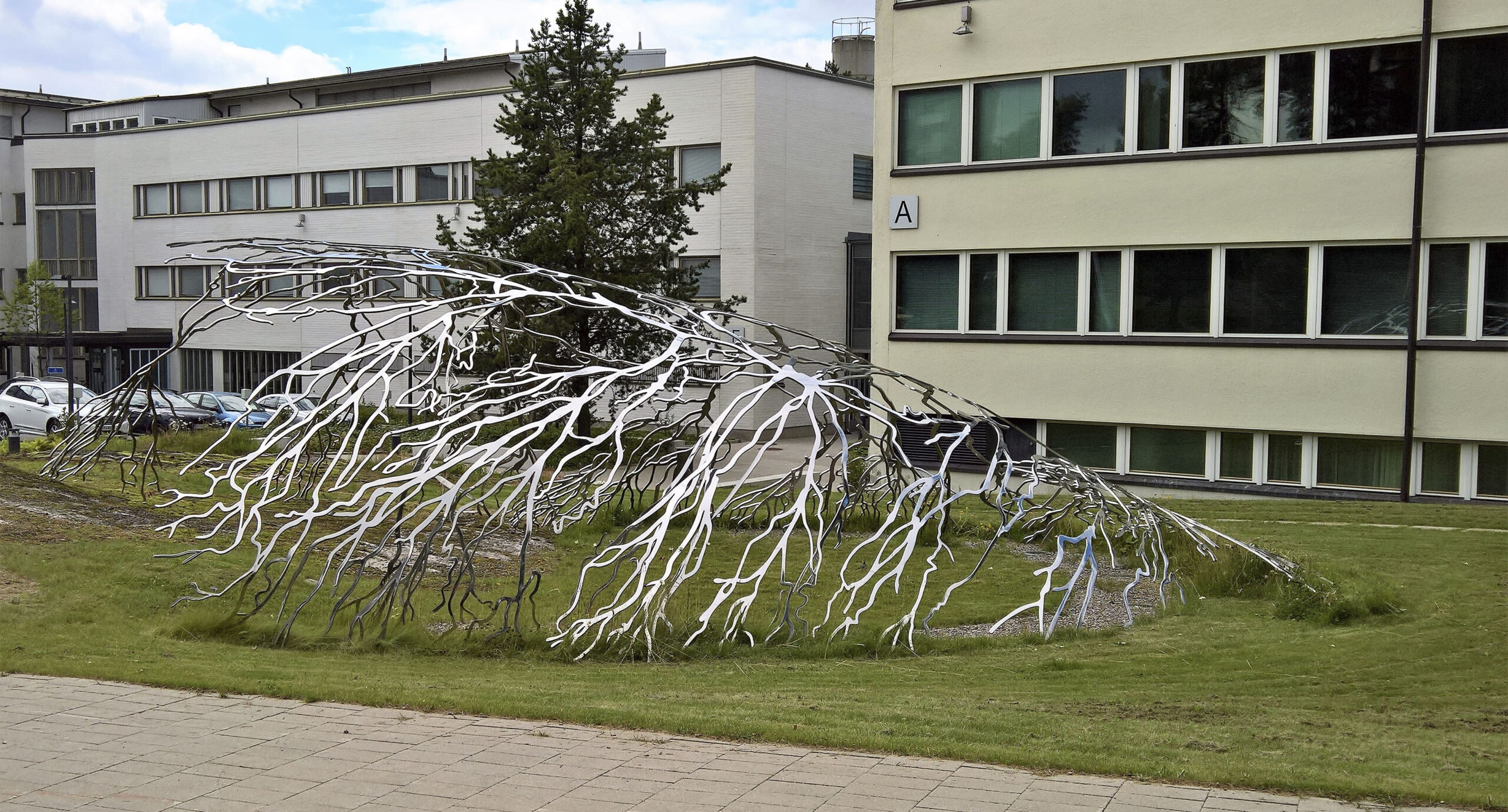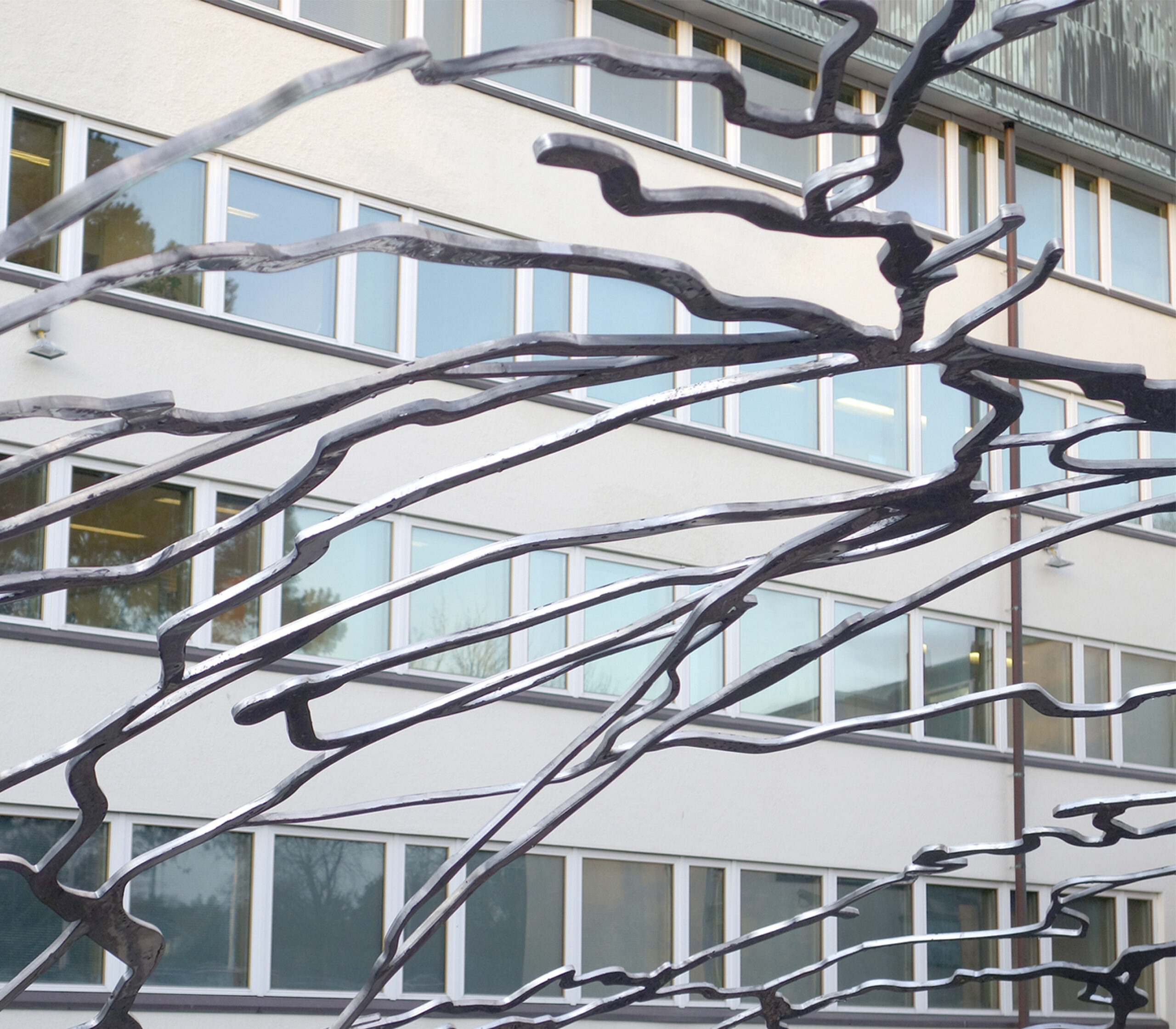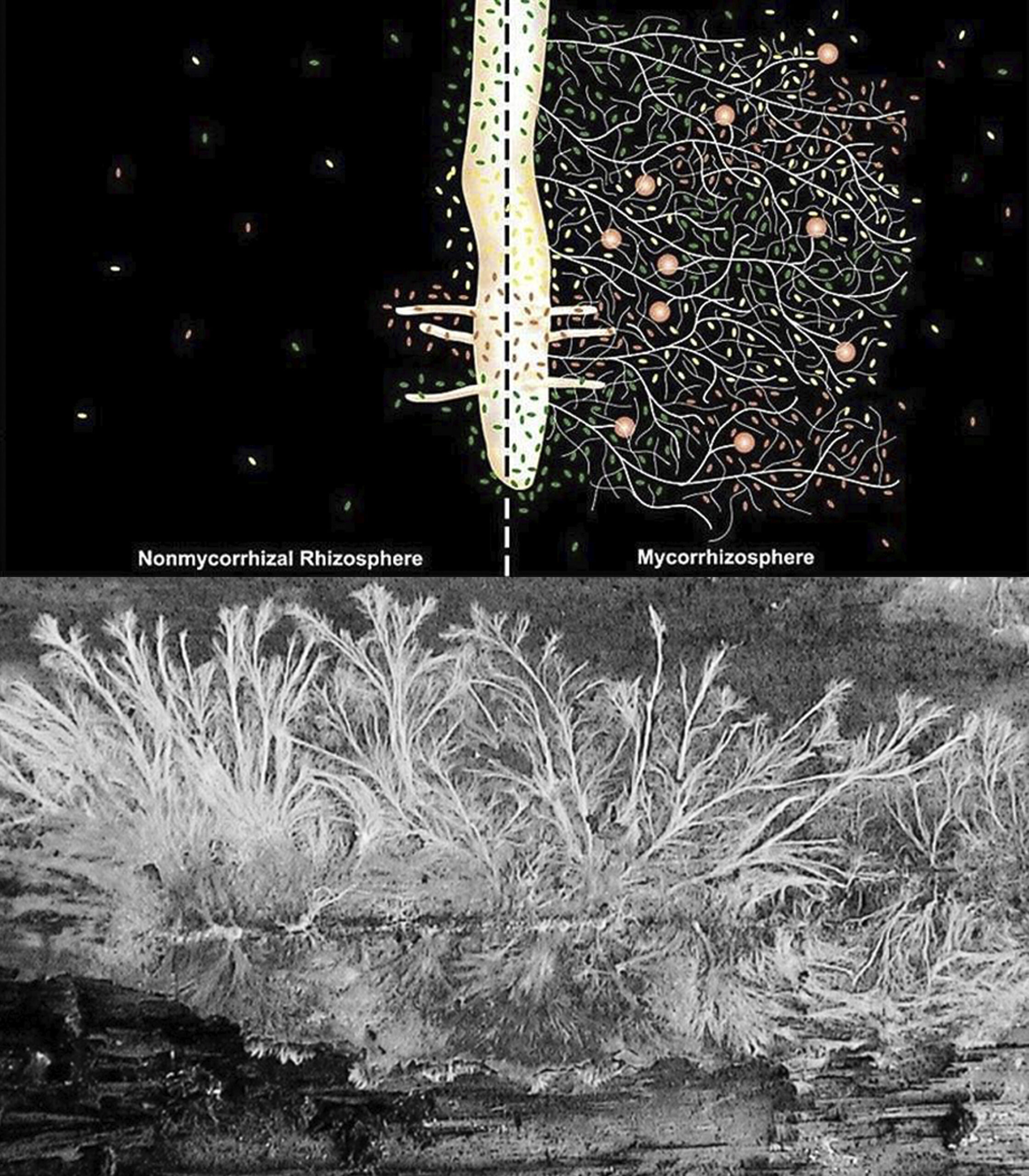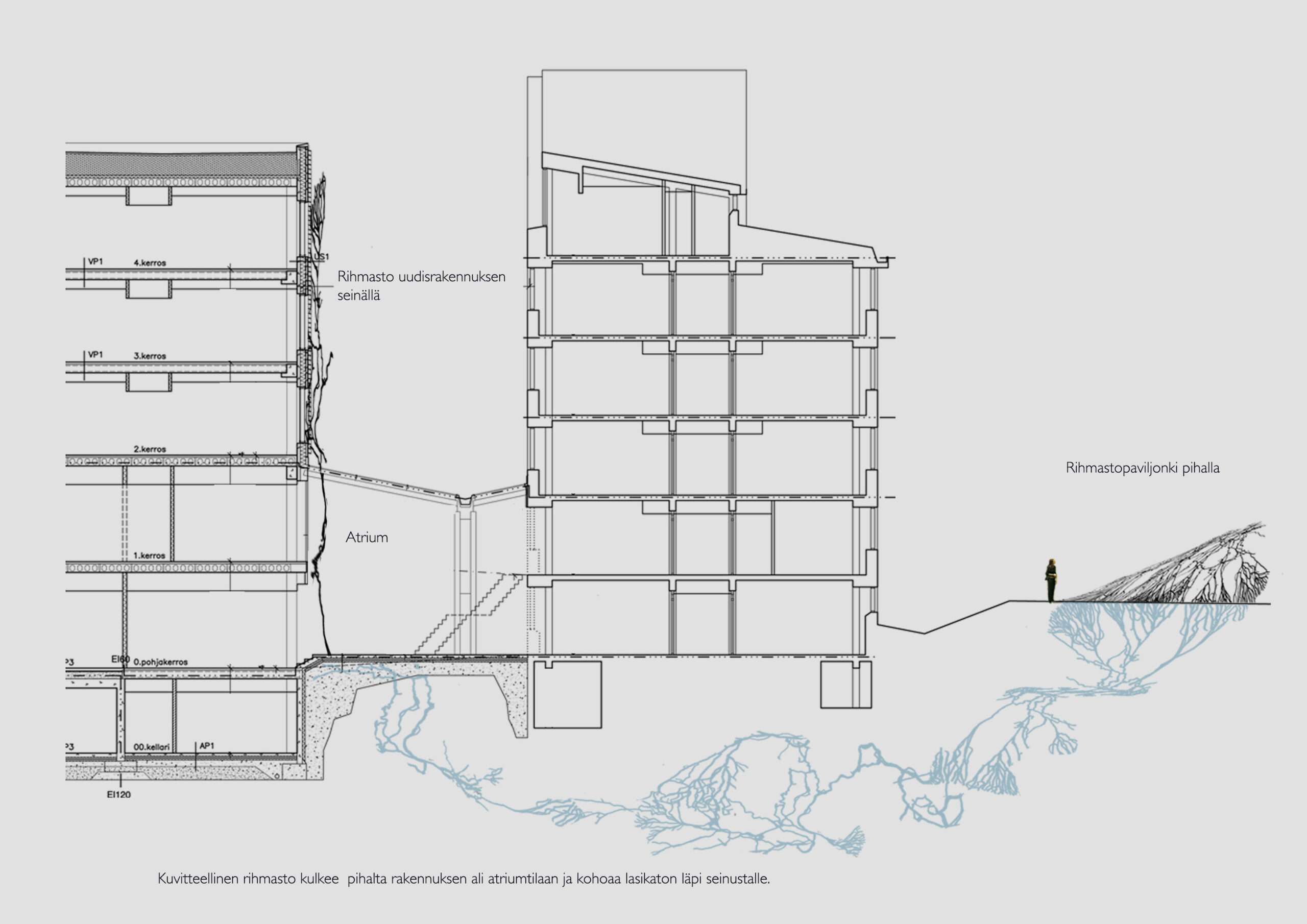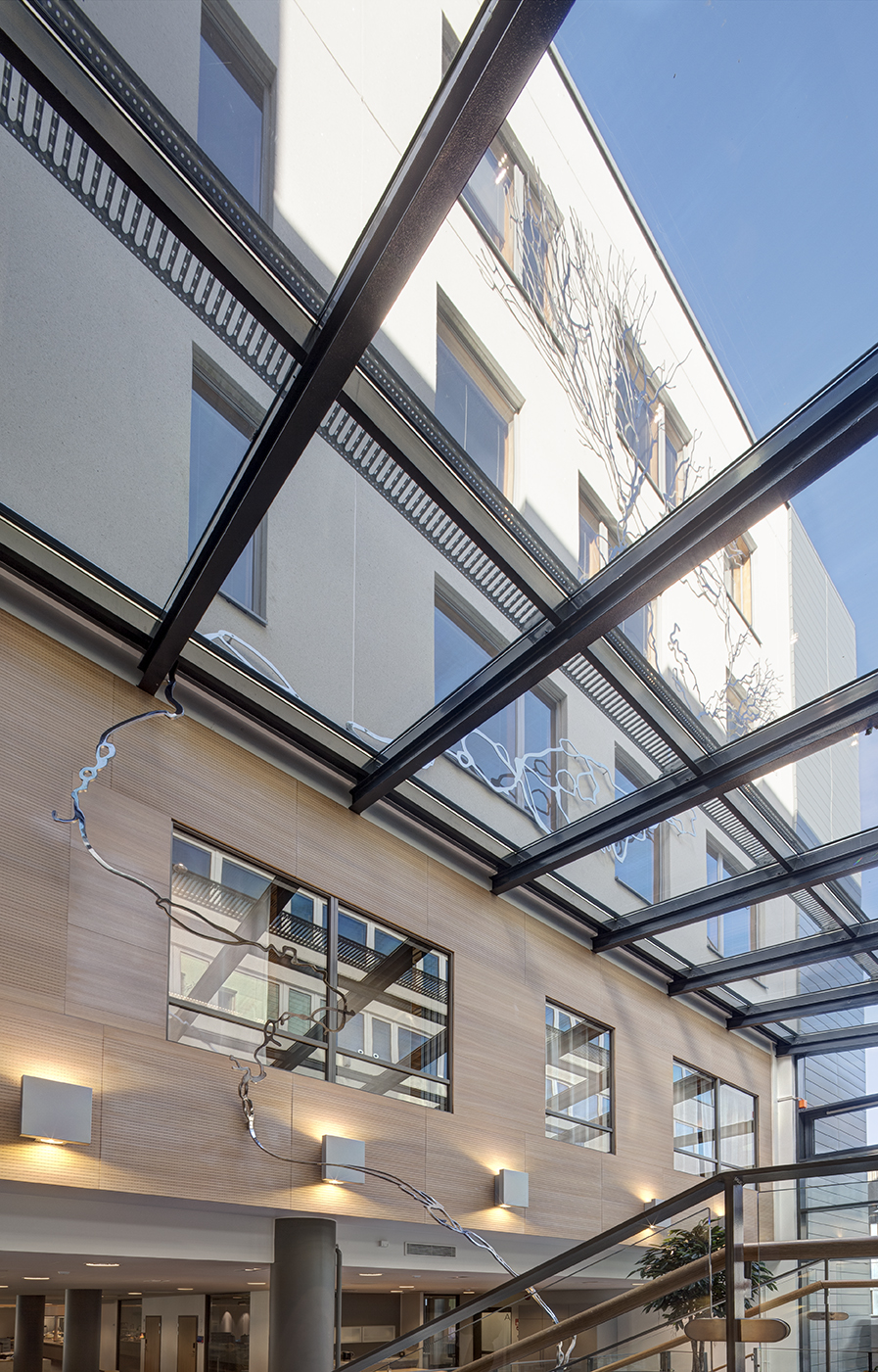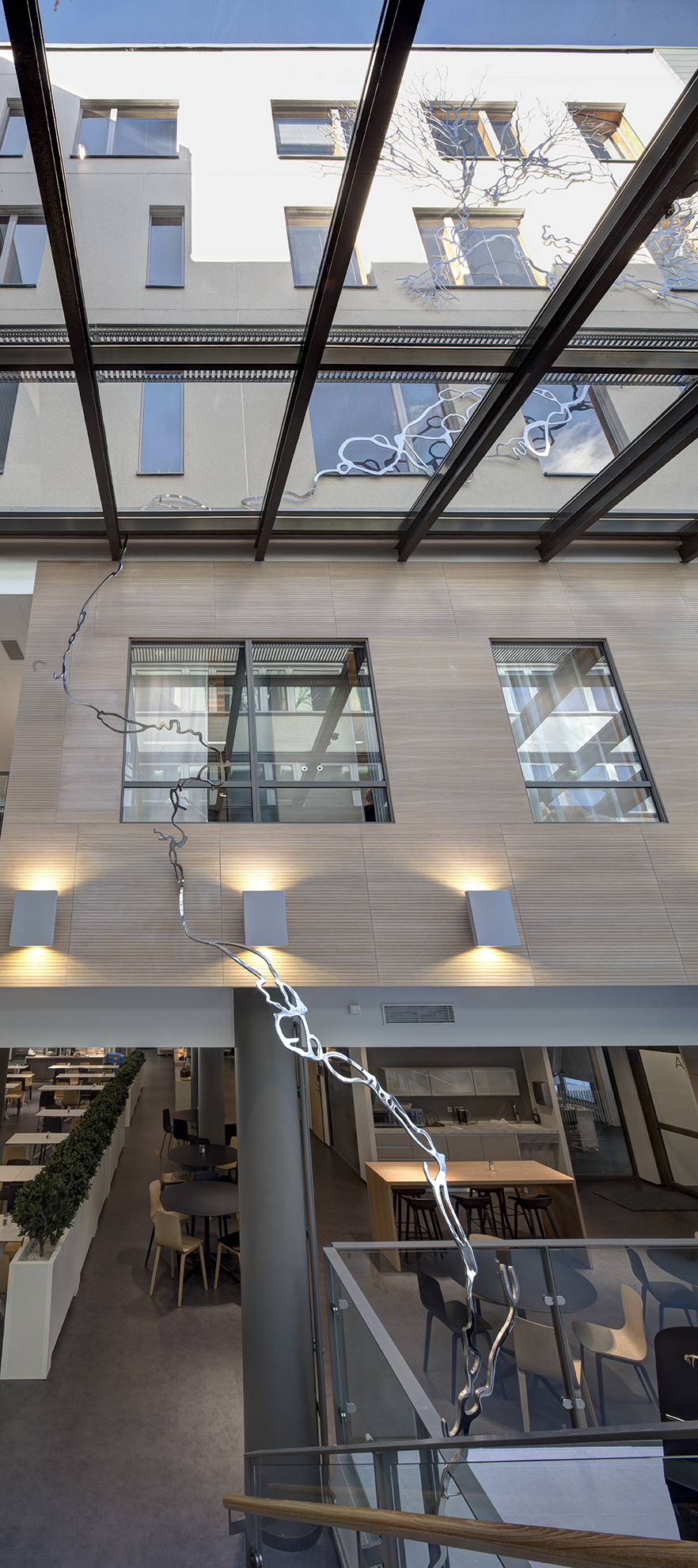Mycelium, 2015
National Institute of Health and Welfare, Helsinki
State Art Deposit Collection Finland
Commisioner Senaatti / Jari Auer
Architect: Hannu Jaakkola Architects Ltd / Kai Rajakaltio
Metalworks: Jukka Merta / Selki-Asema
Polished acid resistant steel Work in three parts:Sculpture in front of house size: 10 x 7 x 3 m, inside the atrium space size 6 x 2 x 3 m, on outside wall size 12 x 7 x 0,5 m
Plants and mycelium forms a symbiotic mycorrhiza relation. This symbiosis increases plants ability to get nutrions and water from the soil while mushroom gets sugars and other products of phosynthesis. Mycelium has potential as biological filter. It can remove chemicals and micro organisms from soil and water. Mycelium spans in the soil like an underground internet. Recent research has shown that plants connected by mycorrihzal fungi can use these connections to produce and receive warning signals. Mycorrhizae form an invaluable part of ecosystems around the world, and can be found in some form or another in just about any ecosystem. In many places, whole forests and ecosystems wouldn’t exist at all without mycorrhiza.
The communal, symbiotic and mediating nature of mycelium forms a parallel with the role of National Institute of Health and Welfare as a promoting and research center of mental and physical well-being.

